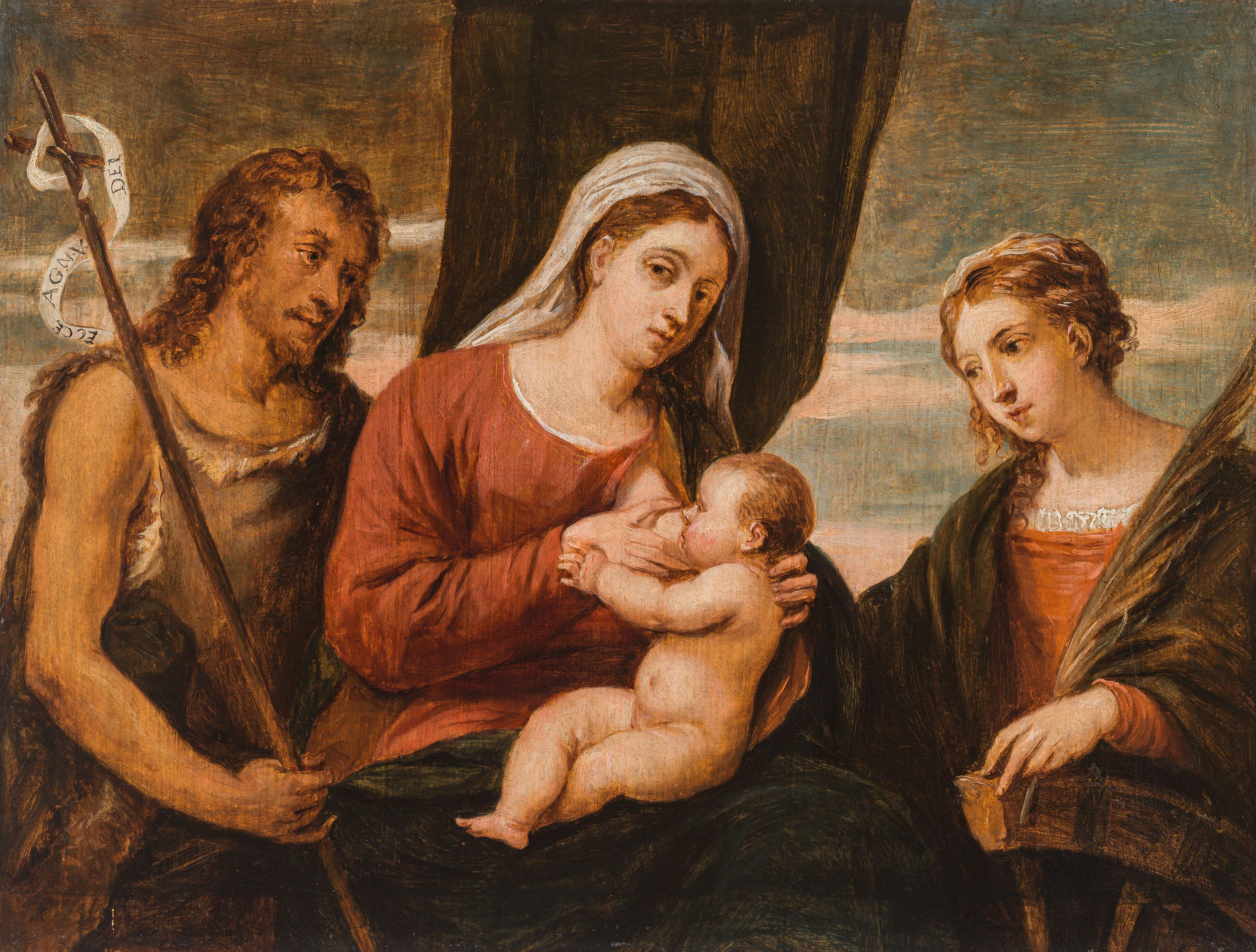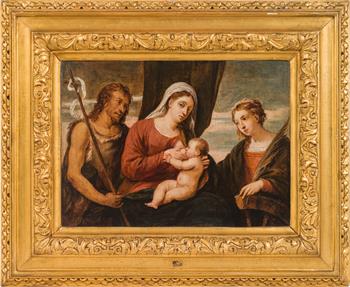0030
David Teniers the Younger
(Antwerp 1610 - 1690 Brussels)
„Madonna and Child with Saint John the Baptist and Saint Catherine (probably after Palma Il Vecchio)“
1650s
oil on panel
17 x 22.7 cm
Provenance
Archduke Leopold Wilhelm of Austria, Brussels (1614-1662);
collection of the Dukes of Marlborough, Blenheim Palace;
Christie's London, 26 June 1886, lot 172;
English private collection;
Christie's London, 11 December 1992, lot 363;
collection Erna Weidinger (1923-2021)
Literature
George Scharf, Catalogue raisonné; or, A list of the pictures in Blenheim Palace, Part 2, London 1862, p. 166, no. 199 (97; as"copied from Palma Giovane);
Charles Davies, A collection of one Hundred and Twenty Paintings by David Teniers (from Blenheim Palace). The property of His Grace the Duke of Marlborough. On Exhibition at Mr. Davis’s Galleries, London 1884, p. 30, no. 199 (97; as "copied from Palma Giovane")
Estimate: € 8.000 - 15.000
Result: € 10.240 (incl. fees)
Auction is closed.
David Teniers the Younger was court painter to the governor of the Spanish Netherlands, Archduke Leopold Wilhelm (1614-1662) and looked after his considerable art collection. In his gallery painting "Archduke Leopold Wilhelm in his Picture Gallery" (KHM, Inv. No. 739), the painter had already displayed his patron's impressive art collection around 1650.
Teniers made small-format copies and oil sketches of the Archduke's collection, which later also served as models for the engravers and copper plate makers and led to the printed catalogue "Theatrum Pictorium" (first published in 1660). The world's first printed catalogue of Tenier's paintings comprises a series of copper engravings after 243 Italian masterpieces from the Archduke's collection; among them is the depiction of the nursing Madonna surrounded by saints, here naturally shown in a laterally reversed manner (cf. British Museum, London, Inv.No. A, 8.199). The designation "after Palma Giovane" of panel 199 executed by Jan Popels is probably misleading. Rylands suspects that the Italian original, repeated by Teniers, may have been one of Palma il Vecchio's early works. In his publication on Palma the Elder, the original painting is listed among the master's lost works (cf. Philip Rylands, Palma Vecchio, New York et al. 1992, p. 329, no. X81). A total of 120 of these so-called "pasticci" by Teniers became the property of the Dukes of Marlborough, whose collection also included this painting.


